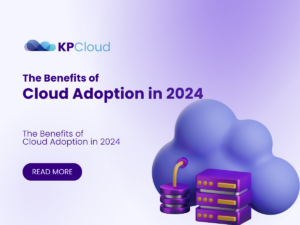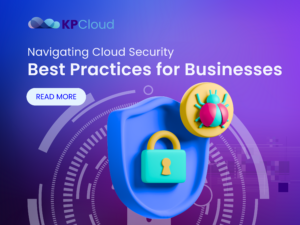As businesses navigate the era of digital transformation, cloud computing emerges as a critical enabler. In this blog, we explore the intersection of cloud technology and the evolving landscape of digital business. Let’s dive into:
Introduction to Cloud Computing
In the rapidly evolving landscape of technology, cloud computing has emerged as a transformative force, reshaping how businesses operate, innovate, and deliver services. Let’s delve into the fundamental concepts of cloud computing and explore its various dimensions.
Understanding Cloud Models
1. Public Cloud
- Definition: Public cloud services are provided by third-party vendors and are accessible over the internet.
- Characteristics:
- Shared Infrastructure: Multiple organizations share the same infrastructure, leading to cost savings.
- Scalability: Resources can be scaled up or down based on demand.
- Examples: Amazon Web Services (AWS), Microsoft Azure, Google Cloud Platform (GCP).
2. Private Cloud
- Definition: Private clouds are dedicated to a single organization and can be hosted on-premises or by a third-party provider.
- Characteristics:
- Isolation: Resources are exclusive to the organization, ensuring data privacy and security.
- Customization: Tailored to specific business needs.
- Examples: On-premises VMware-based private clouds, OpenStack.
3. Hybrid Cloud
- Definition: Hybrid clouds combine elements of both public and private clouds.
- Characteristics:
- Seamless Integration: Data and applications move between public and private environments.
- Flexibility: Organizations can choose where to host workloads based on requirements.
- Examples: A company using a private cloud for sensitive data and a public cloud for scalable web applications.
Cloud Service Models
Infrastructure as a Service (IaaS):
- Provides virtualized computing resources (servers, storage, networking).
- Users manage applications and data while the cloud provider handles infrastructure.
- Example: Amazon EC2, Google Compute Engine.
Platform as a Service (PaaS):
- Offers a platform for developing, deploying, and managing applications.
- Developers focus on code, while the underlying infrastructure is abstracted.
- Example: Google App Engine, Microsoft Azure App Service.
Software as a Service (SaaS):
- Delivers software applications over the internet.
- Users access applications via web browsers without worrying about infrastructure.
- Example: Salesforce, Office 365, Gmail.
Benefits of Cloud Adoption
In the age of digital transformation, cloud computing stands as a powerful catalyst for organizational growth and agility. Let’s explore the compelling benefits that await businesses on their cloud adoption journey:
1. Scalability and Flexibility
- Scalability: Cloud services allow organizations to scale resources up or down based on demand. Whether handling sudden traffic spikes or accommodating growth, the cloud provides elasticity without upfront investments.
- Flexibility: Businesses can choose from a variety of cloud models (public, private, hybrid) and service models (IaaS, PaaS, SaaS) to tailor their infrastructure to specific needs.
2. Cost Efficiency
- Pay-as-You-Go: Cloud providers follow a pay-as-you-go model, where organizations pay only for the resources they consume. This eliminates the need for large upfront capital expenditures.
- Reduced Infrastructure Costs: By moving to the cloud, businesses avoid the expenses associated with maintaining physical data centers, hardware upgrades, and maintenance.
3. Enhanced Security
- Robust Data Protection: Cloud providers invest heavily in security measures, including encryption, access controls, and threat detection. Data stored in the cloud benefits from these robust defenses.
- Compliance and Encryption: Cloud services adhere to industry standards and certifications, ensuring compliance with regulations. Encryption at rest and in transit adds an extra layer of security.
4. Agility and Innovation
- Accelerated Development Cycles: Cloud platforms enable rapid deployment of applications and services. Developers can focus on coding rather than managing infrastructure.
- Experimentation and Prototyping: The cloud allows organizations to experiment with new technologies, test ideas, and innovate without significant risk.
Cloud Architecture and Design
In the dynamic landscape of cloud computing, designing robust and efficient architectures is essential for success. Let’s explore key components and strategies that empower organizations to build resilient, scalable, and innovative systems:
1. Building Resilient Systems
- High Availability (HA): Design systems with redundancy to minimize downtime. Use load balancers, auto-scaling, and failover mechanisms.
- Disaster Recovery (DR): Implement DR plans to recover from catastrophic events. Leverage multi-region deployments and backup strategies.
- Fault Tolerance: Design components to handle failures gracefully. Use distributed systems and stateless services.
2. Microservices and Containers
Microservices Architecture:
- Break down applications into smaller, independent services.
- Benefits: Scalability, agility, and easier maintenance.
- Challenges: Service discovery, inter-service communication, and data consistency.
Containers (e.g., Docker):
- Package applications and their dependencies into lightweight containers.
- Benefits: Consistent environments, portability, and efficient resource utilization.
- Orchestration tools (e.g., Kubernetes) manage containerized workloads.
3. Serverless Computing
Serverless Model:
- Focus on code, not infrastructure management.
- Event-driven execution (e.g., AWS Lambda, Azure Functions).
- Pay only for actual usage.
Use Cases:
- Backend APIs, data processing, real-time analytics.
Data Management in the Cloud
In the era of digital transformation, effective data management is crucial for organizations harnessing the power of cloud computing. Let’s explore key aspects of data management within the cloud environment:
1. Data Lakes and Warehouses
Data Lakes
- Definition: A data lake is a centralized repository that ingests and stores large volumes of data in its original form.
- Flexibility: Data lakes accommodate all types of data from any source—structured (database tables, Excel sheets), semi-structured (XML files, webpages), and unstructured (images, audio files, tweets)—without sacrificing fidelity.
- Staged Zones: Data files are typically stored in staged zones—raw, cleansed, and curated—allowing different users to access the data in various forms for their specific needs.
- Use Cases: Data lakes power big data analytics, machine learning, predictive analytics, and other intelligent actions.
Data Warehouses
- Definition: A data warehouse primarily stores structured data with well-defined schemas.
- Purpose: Data warehouses are designed for querying and analyzing treated and transformed data.
- Integration with Analytics: Data warehouses serve as the foundation for business intelligence, reporting, and operational analytics.
2. Big Data Analytics
- Definition: Big data analytics refers to the methods, tools, and applications used to collect, process, and derive insights from varied, high-volume, high-velocity data sets.
- Sources: Data can come from web, mobile, email, social media, and networked smart devices.
- Benefits: Big data analytics enables organizations to optimize operations, predict outcomes, and drive innovation.
3. Compliance and Governance
Importance of Cloud Governance:
- Ensures asset deployment, system integration, and data security are properly planned, considered, and managed.
- Addresses complex environments involving different groups, third-party vendors, and daily changes.
Benefits:
- Improves cloud resource management.
- Reduces shadow IT by providing controlled access to cloud resources.
- Reduces administrative overhead through centralized policies and controls.

